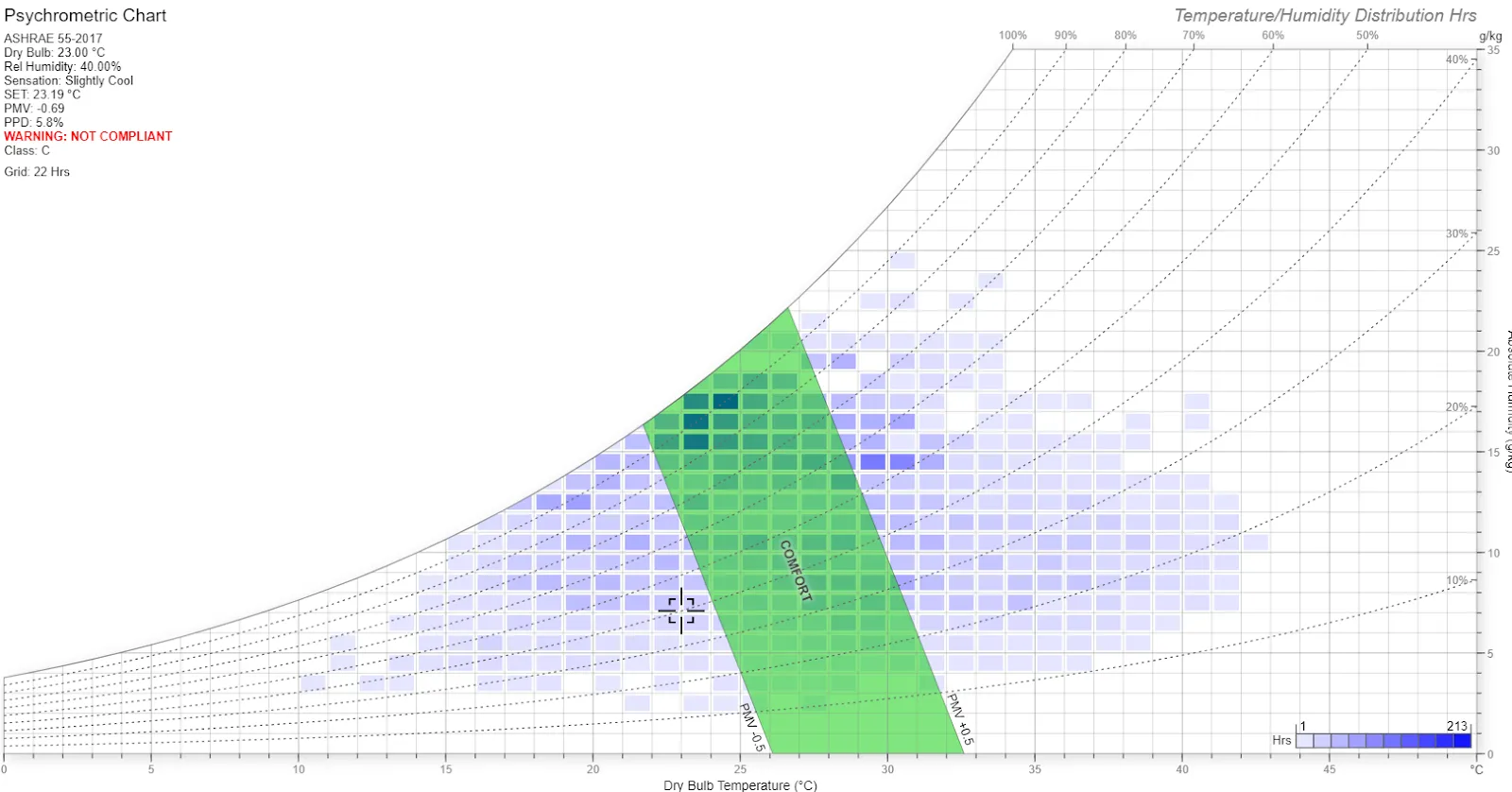 Contact us
Contact usIntent
Community
Studio Organo Concepts
About Us
Subsidaries
Studio Organo
TS RERA No.P02400003403.
TS RERA No.P02400003403.

Authors: Prajwala Gaddalay, Assistant Manager (Sustainability) & Rajasekhar Talluri (Sr.General Manager - MEP & OFM), assisted by Sachi Deora (Intern - Organo Et School)
Introduction
The Chevella region of Hyderabad experiences extreme summer temperatures, soaring up to 45°C with humidity levels peaking at 85%. This intense heat often leads residents to believe that the only viable solution is to install air conditioners (ACs) in every room, neglecting the environmental implications. This paper investigates various cooling solutions, focusing on their efficiency, energy consumption, health benefits, and cost-effectiveness, with a particular emphasis on the suitability of evaporative coolers (EVCs) for the homes in Organo Ibrahimpalle, a eco-community project that is on our drawing boards.
Air Conditioners (ACs)
Air conditioners operate by using refrigerants to absorb indoor heat and release it outside. Typically, a 1-ton air conditioner consumes about 1,000 to 1,200 watts per hour. The refrigerants used, such as R-410A and R-22, have significant environmental impacts. R-22, a hydrochlorofluorocarbon (HCFC), is being phased out due to its high ozone depletion potential. As global cooling demand is projected to triple by 2050, the environmental impact of ACs is a growing concern.
Types of ACs:
- Window ACs
- Split ACs
Types of Refrigerants:
- R-22: Contributes to ozone depletion. Phased out as of 2010.
- R-407C: Has a Global Warming Potential (GWP) of 1774, does not deplete ozone but has lower efficiency.
- R-454B: With a GWP of 466, classified as mildly flammable.
- R-401A: A hydrofluorocarbon (HFC) with a GWP of 2088, commonly used in commercial AC systems.
- R32: A better alternative with a GWP of 675, offering higher energy efficiency.
Evaporative Coolers (EVCs)
Evaporative coolers cool air by drawing warm air through water-saturated pads, where evaporation lowers the air temperature. These coolers use between 100 to 300 watts per hour and consume 3 to 15 liters of water per hour for a 150 square feet room. They are environmentally friendly, adding moisture to the air without using harmful refrigerants. However, they are less effective in high-humidity areas and require frequent maintenance.
Types of Evaporative Cooling Systems:
- Direct Evaporative Cooling (DEC): Cools air directly through the evaporation process, adding humidity.
- Indirect Evaporative Cooling (IDEC): Cools air by passing it over a heat exchanger cooled by evaporated water, avoiding added humidity but with higher power consumption.

Comparative Analysis
A study comparing ACs and EVCs(Image 1) for a cooling volume of 36,000(Image 2) cubic feet in a home in Organo Ibrahimpalle reveals distinct differences. Installation costs for ACs are relatively lower compared to EVC systems. Among EVCs, DECs are more economical and water-efficient but less effective, reaching temperatures up to 28°C ± 2, which is on the edge of the comfort zone. IDECs, while more efficient, incur higher power and water costs.

Key Findings:
- Installation Cost: ACs are cheaper to install compared to EVCs.
- Water Consumption: IDECs consume more water compared to DECs.
- Energy Consumption: IDECs consume more energy, which could be mitigated by using solar panels.

Psychrometric Analysis
The psychrometric chart for Hyderabad(Image 3) shows that DECs can only achieve temperatures at the edge of the comfort zone, while IDECs can maintain more comfortable indoor conditions but at higher resource costs.
Health and Environmental Considerations
Evaporative coolers offer health benefits by providing high airflow rates (4000-9000 CFM), which improves air quality, ventilation, and comfort by removing pollutants and excess heat. In contrast, split AC units have lower airflow rates (around 800 CFM), resulting in slower temperature changes and less effective ventilation.
Conclusion
Considering the cooling needs and environmental impact, the solution lies in optimizing the mechanics of AC systems. This involves redesigning outdoor units to improve efficiency by adjusting the orientation and positioning relative to radiation angles and wind directions. Such adjustments aim to enhance user comfort, reduce environmental impact, and improve cost-effectiveness.
Future Directions
Further research should explore integrating renewable energy sources, such as solar power, to offset the energy consumption of cooling systems. Additionally, innovative building envelope designs incorporating passive cooling techniques could complement mechanical systems, providing a holistic approach to sustainable cooling solutions.
By carefully evaluating and implementing these strategies, we can achieve a balance between comfort, cost, and environmental responsibility, making Hyderabad's homes more sustainable in the face of rising temperatures and humidity levels.
We are a cross-functional and research-focused team of architects, engineers, and technical experts, who ideate, refine and detail eco habitat products, components, and solutions. Our core intent is to co-create and manifest apt rurban lifestyles across all eco-habitat components to celebrate the living for respective user groups. From earth-friendly neighborhoods to home interiors, we’ve got it all covered.
Instagram: https://www.instagram.com/studioorgano/
Website: https://www.organo.co.in/studio-organo
If you’d like to know about our design explorations or if you would like to be part of our user research as we refine the design, please email us at studio@organo.co.in